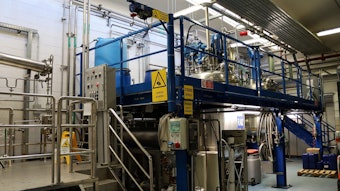People have been developing better, smarter ways to improve efficiencies and save time and money in the supply chain for as long as goods and products have been bought and sold. It seems there are always more inventive ways to improve efficiencies. The most significant breakthroughs in supply chain optimization came with the advent of advanced computing technology and have evolved dramatically in the past 25 years. And now, executives can break down every level of the manufacturing, processing and transportation of goods to find ways to reduce supply chain costs, improve margins, lower inventories, increase manufacturing throughput and increase their overall return on investment (ROI). Sustainability issues have also recently been introduced into the mix, adding another wrinkle to an already complicated list of measurable concerns.
Just as optimizing the supply chain is about saving money, so is creating more sustainable processes. As much as eco-friendly practices send a positive corporate message, they can also improve efficiency and profitability.
Examples of the synergies between cost savings, process efficiency and sustainable practices are everywhere. From improved package designs that save on gas or refrigeration costs to advanced corporate programs that play on their energy efficient green building designs or commitments to using wind energy and other green alternatives for large percentages of operating costs, sustainability can help a business from top to bottom, helping grow new business, save costs and retain market share with increasingly sustainability-conscious consumers.
Packaging systems optimization programs were developed with just these synergies in mind. At the heart of one such program is the intention to provide companies with new ways to streamline operations and reduce total systems costs. The program hones in on efficiency and waste reduction throughout the supply chain and maps out sustainable fixes that improve the bottom line. Everything from material optimization and package design to material handling and distribution are analyzed.
Less is More
Companies are on a constant hunt to build more with less, but some of the biggest advancements in recent years have come from developing ways for companies to do more with the material they already have. From developing new package designs and reengineering old ones to creating the same package shapes with less material, this trend can be seen in virtually every consumer packaged good company. Creating new shapes in juice bottles that save material but don’t sacrifice filling volume is just one example. The new milk container available in Sam’s Club that is square-shaped and caseless is another example. Even label makers are getting into the game. Eastman Chemical’s newest shrink labels can be made with 20% less material than traditional labels of the past. Part of Georgia-Pacific’s contribution to this area of study is creating corrugated boxes that have reduced fiber content, saving material costs and reducing package weight while maintaining strength and support.
Increase Serving Size; Increase Sales
While larger package sizes may not seem like a highly sustainable packaging decision at face value, multipack options such as those found at club and super stores are, in actuality, far more eco-friendly than their single-serving rivals. Take the case of Honest Tea, an organic iced tea brand that Georgia-Pacific worked with to move the brand into club stores by transitioning to a 24-drink multipack. The new option gave the brand more shelf appeal and visibility, and was 41% lighter, saving on shipping and fuel costs. In addition, the new multipacks are made with 35% postconsumer waste and the handle is made with 45% postconsumer waste. Annual reductions in fiber use were 1,200 tons, 2,600 tons of carbon dioxide emissions were eliminated based on the manufacturing process, and 12,369 MM BTU of energy savings were calculated per year as a result of the transition.
Function Meets Form
Similarly, the rise of functional packaging has given way to a whole new approach to sustainability. Think back to one of the earliest forms of functional packaging—microwave popcorn. The package could also be used as the eating bowl, eliminating unnecessary waste and saving water and washing detergent. Now this same packaging technique is seen in everything from pint-sized ice cream containers to yogurt—where granola and other toppings can be packaged separately on the same container.
Easing the Load on the Road
There must be a dozen ways consumer package goods companies have learned to save money and become more sustainable when it comes to transportation. From the square, caseless milk packages mentioned earlier, which save on milk crate costs and stack better in the store, to advanced aseptic packaging that allows perishable products to be shipped without refrigeration, sustainable practices can be found anywhere you turn on the transportation side of the supply chain. While shape has been a big area of innovation for con
sumer brands, so has the material choice—and a good deal of the change has been the result of weight. Heavier materials such as glass have given way to new corrugated boxes and other lightweight containers. The lighter the load, the less fuel it takes to haul. It’s a simple law of physics.
Conclusion
Supply chain optimization will save your company money while reducing any long-term negative impact on the environment. While the concept is not a new one, many engineers and companies are constantly on the hunt for the next big idea. Cost savings and material and energy savings are areas of constant scrutiny for any organization. And by staying connected to the companies on the forefront of these innovations, you’ll always be in the loop.
Pat Smorch is director, packaging sustainability at Georgia-Pacific’s Innovation Institute. He is an expert on the synergies between supply chain optimization and sustainability.










